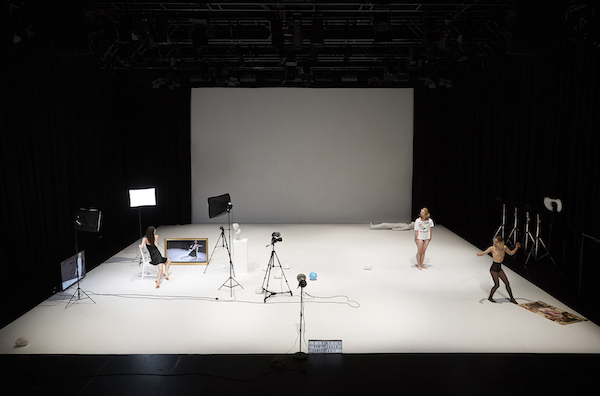Presented by Carriageworks, Dancehouse and The Keir Foundation
Bay 20, Carriageworks, 17 March
According to The Keir Foundation website, the biennial Keir Choreographic Award promotes “innovation, experimentation and cross-artform practices in contemporary dance while providing significant support to the contemporary dance sector in Australia.” On this viewing, it seems the broad spectrum of works presented by the four finalists in 2018 successfully reflects the diversity and hybridity of forms they are aiming to promote. Collectively, there was a blurring of boundaries between dance and performance art that negated and challenged the traditions of theatrical dance, but ultimately, the two winners were the ones with more specifically dance-like choreography and movement. Melanie Lane won the first prize of $30 000 for her work Personal Effigies and Amrita Hepi won the Audience Choice award of $10 000 for A Caltex Spectrum.
Melanie Lane’s Personal Effigies is essentially a self-choreographed solo, with musician Chris Clark performing live on stage, but not participating physically in the action. Lane incorporates some very interesting visual effects, including the use of a portable mirror that allows her to effectively distort her basic physical form from the audience’s perspective. The way she transitions neatly from one section of the work to another gives this work a satisfying structure and sense of direction, finishing with what is the most captivating section of all – in which she changes from nondescript black pants and t-shirt, with a gold painted face, to a vividly coloured skirt and hooded top complete with a long wig and a striking gold mask which obscures her face without completely covering it. Congratulations should go to costume designer Paula Levis for what is an integral part of the work. Lane is a Javanese/Australian choreographer and, although I am no expert in Javanese classical dance, I believe there are references to the Javanese classical tradition in both costume and movement; from the grounded, turned-out stance with flexed knees and ankles, to the subtle movements of the hands and contrasting shifts in epaulement. I would happily watch this again.

Amrita Hepi’s A Caltex Spectrum is a work for three dancers and a motorbike. Hepi’s choreography reflects the macho, sexualised nature of contemporary bikie culture, and this is mirrored in the costuming of ripped jean style trousers with bare midriffs and abbreviated, asymmetrical tops fitted closely to the upper bodies of her dancers. Credit must go to Matthew Stegh for the styling and Sophie Penkethman-Young for the visuals. A Caltex Spectrum is performed on a stage saturated with red light and this gives the work an earthy, ominous edge, which is backed up by the guttural, semi-industrial sounds of the music (by Daniel von Jenatsch and Sarah Scott). Dancers Jahra Rager, Tyrone Robinson and Sala Vai performed well and, although probably unintended, this work brought to mind the Mad Max film series in both styling and atmosphere.

The works of the remaining two finalists, Luke George’s Public Action and Nana Bilus Abaffy’s Post Reality Version are more conceptual in nature, but quite different from each other. Bilus Abaffy’s Post Reality Vision sounded interesting in the program but didn’t translate into an overly engaging work. There is partial nudity, and a plethora of props, including multiple cameras, standing lights, a screen, a framed artwork, planks of wood and hammers. Yet I left this work feeling perplexed. The concept of dancers filming themselves in real time, allowing the audience to view them both in the flesh, and through framed and angled recordings is an interesting one, and it may be that this work would be more suited to being performed in a gallery space as opposed to a theatre setting.

Luke George’s Public Action breaks down the boundaries between audience and performers by moving the cast of five dancers from the stage to the auditorium. In silence and very slow-motion they roll from the top of the auditorium, down the middle of the seats, displacing audience members, and neatly ordered rows of chairs as they go. The control with which the dancers did this was impressive – a jumbled mass of bodies and chairs travelling downwards on a slope did not look like a comfortable experience, especially up close. As they neared the front rows, the dancers left the seating area and moved, one by one, back to the stage (now half filled with standing audience members) as a pop song started to play.
All in all, an interesting evening of works and kudos to the presenters; The Keir Foundation, Dancehouse and Carriageworks, with additional funding from the Australia Council, for funding the development of eight new works on a biannual basis. Bring on 2020!
- GERALDINE HIGGINSON
Picture top: Keir Award winner Melanie Lane in her work 'Personal Effigies'. Photo: Zan Wimberley.



